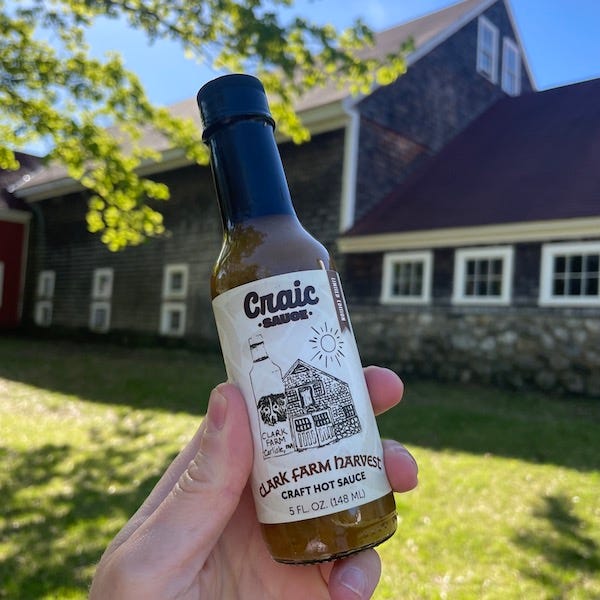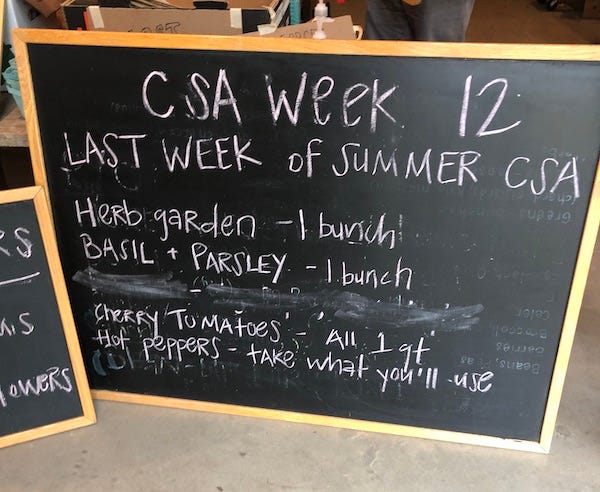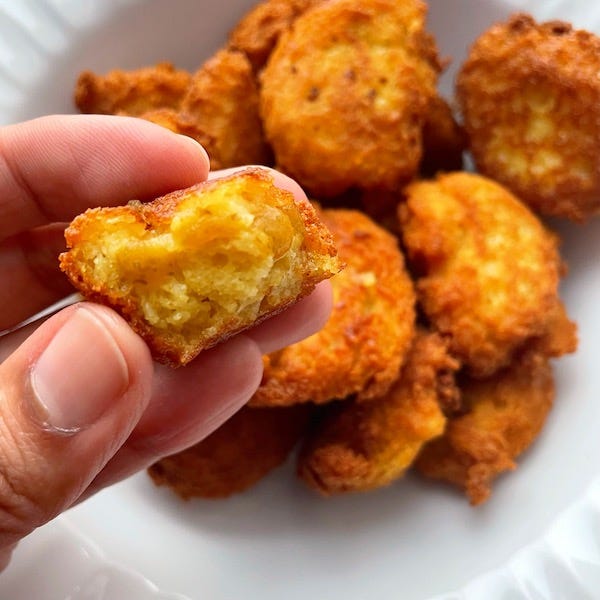Wednesday Walk: Good Collaborations
A hot sauce made from nearly wasted peppers, a giraffe in a stylish sweater, and the dark side of industrial agriculture
Welcome to Willoughby Hills!
If you enjoy what you’re reading, please consider a free subscribtion to receive emails every Wednesday and Sunday plus podcast episodes every two weeks. There are also paid options, which unlock even more features.
As is typical every Wednesday, I’m bring you a smattering of topics that I hope will make you a bit more curious about the world around you and give you something to think about later. I call these Wednesday Walks, as it’s the type of conversation we might have walking down a path in the woods. Shall we take a stroll?
Surplus Sauce
A few weeks ago in this Wednesday Walk column, I wrote about local hot sauce business Craic Sauce (pronounced like “crack”).
At the time, I was mentioning Craic because they had just kicked off a fundraising effort to help expand their business. As of this writing, more than 70 people have contributed to the effort and helped raise nearly $15,000! If you’re interested in contributing, the fundraiser is open until June 25, so there’s still time.
Today, I wanted to share another story about Craic Sauce though, because I think it highlights the beauty of collaboration, especially within the local agricultural system.
A little over a week ago, I went to pick up my CSA share from Clark Farm in Carlisle, MA. In addition to the usual winter storage crops and early spring leafy greens like carrots, radish, arugula, and lettuce, there was also a special treat in the share: a limited edition bottle of Craic Sauce!
Last fall, after a brutally hot and dry summer, farmer Andrew Rodgers and his crew at Clark found themselves with a significant abundance of peppers on the vine. In past years, I have been the recipient of some of these extra peppers, as CSA members at the end of the season are often welcomed to pick as much as they’ll use. I’ve dried cayenne peppers to grind down into flakes and turned jalapeños into hot pepper jelly.
But last year, as summer turned to fall and the threat of the first hard frost loomed, there were way more peppers on the vine than could be harvested by CSA members. Andrew connected with Brian Ruhlmann from Craic Sauce and they decided to collaborate on a way to use the peppers and other ingredients around the farm to make something special.
Brian and his team rushed to harvest nearly 400 pounds of peppers before the first frost. He found an eclectic mix of flavors and varieties: habaneros, jalapeños, serranos, and hot wax, all in various stages of ripeness.
Brian and Andrew worked out a deal to use the peppers and some other fall crops from the farm (including onions, beets, and carrots) to make a limited edition hot sauce for Clark Farm CSA members. The sauce fermented over the winter and was bottled up and shared with all of us recently. Brian was able to produce around 1,000 bottles of finished hot sauce and Andrew told me that if they weren’t turned to hot sauce, they could have ended up as compost or pig feed.
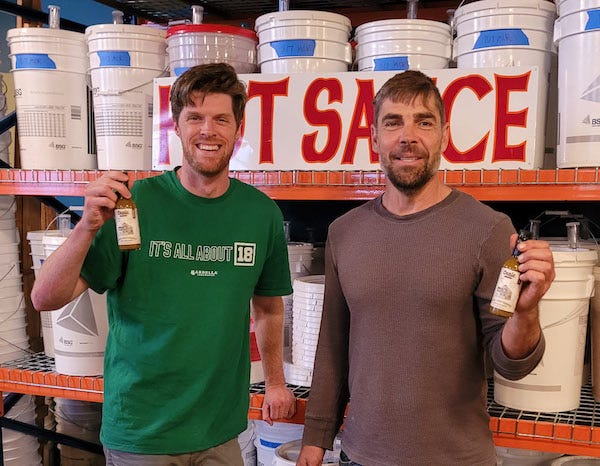
Collaborations like this are part of why I love supporting my local farmers and food producers. At the local scale, nothing is really waste, it’s all part of the cycle of death, decay, and rebirth. Manure becomes fertilizer, which becomes crops, which become food, which become manure, forever and ever.
At the industrial scale, waste is an inherent part of the process, accepted as the cost of doing business. Large mono-crop farms require chemical inputs to feed their plants, animal operations can’t find a home for their manure so it becomes a dangerous cess pool; waste is everywhere. For a large grower, a hard frost is unfortunate, but there aren’t always alternative distribution streams that allow for a fast pivot to make lemonade out of lemons (or hot sauce out of peppers).
We are big fans of the final product of this particular partnership. The hot sauce has a very unique flavor which has some heat, but also some sour to it. My wife was immediately reminded of Guyanese and Trinidadian street food like pholourie and has begun incorporating the sauce into some of her foods, including a burger sauce and as a cheesesteak garnish.
If you’re interested in trying the sauce, it’s available at select retail locations in Massachusetts (including Clark Farm Market). If you’re outside of the area, you can order it online and have it shipped.
A Darker Side to Farming
As I hope the story above about Clark Farm and Craic Sauce illustrates, part of the joy of knowing your farmer and other food producers is that they see their work as incredibly human and see it as contributing to the community.
On the other end of the spectrum is industrial agriculture, where people, livestock, and fields are all viewed as resources and the goal is efficient production. This method of thinking reduces the contributions of every part of the life cycle of farming to data on a spreadsheet and is ripe for exploitation and abuse.
The latest case of this was described in a recent report by Scott Pelley for 60 Minutes, which you can watch below:
In the video, Shannon Rebolledo, an employee for the U.S. Department of Labor discusses child labor violations at a slaughterhouse in Grand Island, Nebraska owned by JBS. The plant processes 5% of the beef in America and it subcontracted overnight cleaning of the kill floor to PSSI, a company owned by the investment group Blackstone.
According to Rebolledo, she was made aware of the possible employment of children at the meat packing plant by a middle school teacher who reported burns on a 14 year old student. The student explained that she worked overnights on the cleaning crew, using scalding water and toxic chemicals to clean sharp equipment.
The Department of Labor eventually confirmed 102 minors employed by PSSI at 13 plants in 8 states, although the actual number of underage workers between the ages of 13-17 is believed to be much higher. PSSI settled with the government, paying a fine of $1.5 million.
When I first heard this report, I thought back to my own experience working as a teenager. I was hired at Toys R Us at age 16, working as a cashier and doing some occasional stocking, and there were very strict rules governing what I could and couldn’t do as a minor.
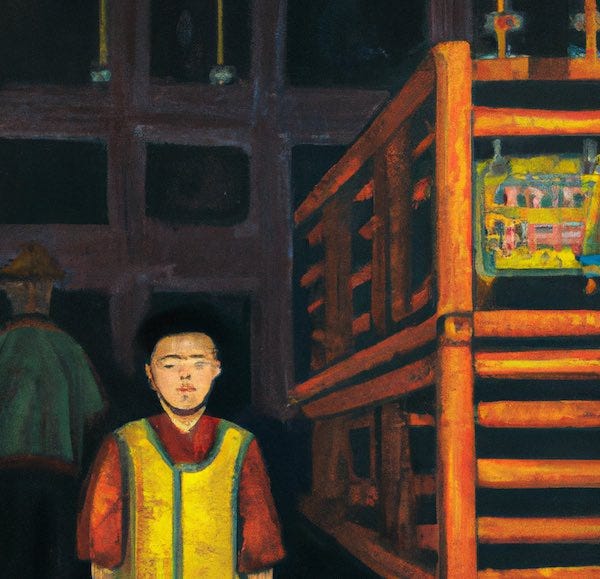
We had a freight elevator in the store that I was allowed to put things in, but I could not lock the door on it, nor could I press the button to send it up or down. Minors were required to clock out before 10pm every evening, even if work wasn’t yet done. We were expected to drop whatever we were doing around 9:55pm and head to the break room to clock out. The adults working were expected to finish that which we couldn’t.
I’m not sure how much of this was Ohio state law, how much was simply overzealous enforcement by the store, or if it was some combination of both of those things, but at any rate, it was clear that if I wanted to keep my job, I needed to abide by these standards.
That job isn’t so far in the rear view mirror to be ancient history, which makes me wonder what went wrong in this particular case that children ended up doing such manual and dangerous work.
The 60 Minutes report touches on the culpability of the parents, but I can’t imagine many adults willingly making that decision to have their children labor in a slaughterhouse just for a “learning experience.” My first reaction was that tough economic conditions for the family force children into this situation.
But after seeing this report, I listened to an interesting episode of Beyond the Scenes from The Daily Show hosted by Roy Wood Jr that’s worth hearing.
In it, Roy chats with New York Times investigative reporter Hannah Dreier and Norma Flores López, Chief Programs Officer for Justice for Migrant Women, about the issue of child labor.
In many cases, teens are migrating to America without parents and are put in the care of adults who are essentially placing them under indentured servitude, forcing them to labor on farms or in factories for long hours and low pay and taking a large cut of their salary in exchange for getting them across the border and providing housing. Because of the situation, these children are often unable to speak out about their condition.
Norma Flores López, who began working in fields picking crops as a 9 year old alongside her parents, pointed out that there is often talk about farm work as apprenticeship, which is leading many lawmakers to try to loosen child labor laws across the country. But she sees no opportunity for advancement in the work she did as a young child:
“Even though I spent my life working in the fields, that my parents spent their whole careers working in the fields, they never had access, I will never have access to capital, to land, to the actual opportunities to one day own my own farm. All I know is how to pick asparagus, and how to pick onions and apples, and that’s all I will ever do because there is no climbing up the professional ladder. That is just a smokescreen for reality. What they just want is to be able to have a cheap labor force to be able to have cheap products that they can then have record breaking profits off of, and it’s built on the backs of migrant workers.”
This is yet another reason why I place such a high value on local, small-scale farms. My produce and meat may cost a little more upfront, but it’s hard to quantify the value of knowing that your farmers are treating their workers as humans and that more wealth generated by the labor of farm workers stays in our local community, rather than being sent off to a billionaire absentee owner.
One More Collaboration
Ending today on a lighter note, I wanted to check in on a different collaboration. This one was one that seemed unlikely to me when it was first announced: the partnership between Toys R Us and Macy’s to bring Toys R Us “store within a store” concepts to Macy’s locations.
I wrote about the partnership (and the many, many brand partnerships Toys R Us has been apart of) back in November. At the time, it was unclear if the store within a store concept was for a single holiday season or if it would last.
I was recently walking through Boston’s Downtown Crossing neighborhood on my lunch break and decided to stop into Macy’s to see if the Toys R Us toy department was still there. To my surprise, it was still an active department and looked to be in better shape than the last time I was there. Last November, I wrote:
“Aside from a few reusable bags with the Toys R Us logo, there was no distinct Toys R Us merchandise. I was hoping to maybe see a Geoffrey plush toy or figurine or an ‘I’m a Toys R Us Kid’ t-shirt. Since those items were absent, it literally felt like the toy department anywhere.”
Even though Funko is in the process of destroying many of their Pop figures, the Macy’s Toys R Us is still selling a version of one with Geoffrey the Giraffe wearing a Macy’s sweater. It was a bit too weird and wonderful to not add to my collection given the five years that I spent with the chain, even though I am trying to cut back on my more consumerist impulses.
Of course, as soon as I took it out of the box, I immediately regretted my purchase. One of the trademarks of the Funko figures is their oversized heads, although the smaller feet have clearly not been designed to hold the weight of those heads. The only option for displaying my new Geoffrey is to have him lean on something else as he literally cannot stand on his own two legs without wobbling all over the place.
There’s probably an analogy in here about the precariousness of the Macy’s/Toys R Us partnership, but I’ll try not to read too much into it.
Although maybe it wasn’t the worst purchase in the world, as there’s currently an eBay member selling a collection of Toys R Us merchandise for $23,050 or best offer. For that price, you’d think they’d be selling one of the custom cars from the Times Square flagship store’s ferris wheel, but alas, it’s just some baseball cards, a Geoffrey jack in the box, a pressed penny, and 40 or so other odds and end like that.

I stopped in a local record store this weekend (the one next to Electronics Plus) and they had a Sesame Street record from 1977 with an original Toys R Us price tag still attached selling for $5. I probably should have bought it and listed it on eBay for $5,000, but for now, I’ll just hold on to my Geoffrey Funko and hope it increases in value someday.
Thank you for reading! Did you get something out of today’s issue? I always love hearing your thoughts, so please drop a line in the comments.
I publish new issues every Wednesday and Sunday. Sign up to always receive the latest issue and support my work:
Other Wednesday Walks
If you’ve missed past issues of this newsletter, they are available to read here.





